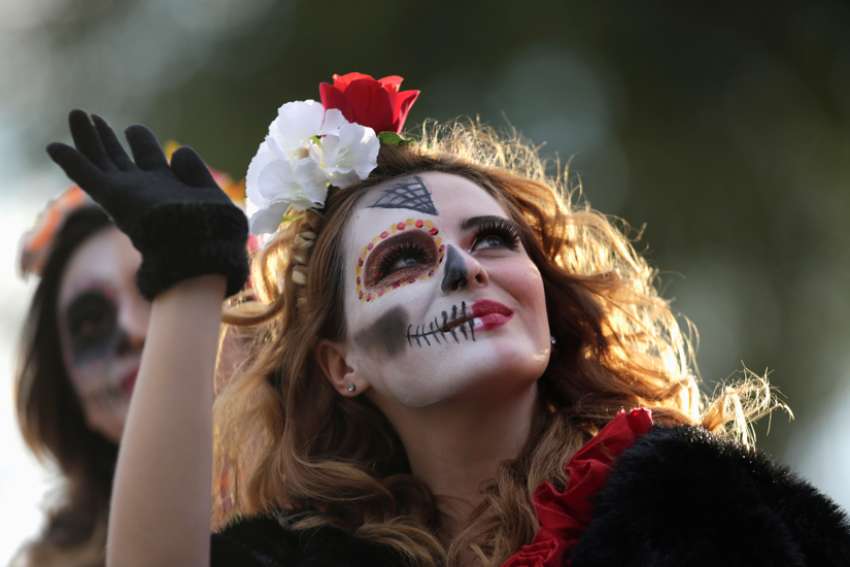We may find ourselves feeling more like dry soil: worth nothing, destined to produce nothing.
Underneath the rage and despair around and within us is often an inner cry: “I’m nothing, a failure. How long can I go on hiding, and what happens when the truth comes out?” Many, including the outwardly successful, carry this kind of self-disgust and self-agony, hidden perhaps even from themselves.
Jesus used the image of seeds and soil (Mark 4 and parallels) to tell us not to be hard, unreceptive and unable to bear new life. But how do we get there, especially when we feel we really are barren, and when the thin layer of meagre soil gets stripped away our nothingness will be exposed?
Are we stuck in this? Can we somehow discover our true selves, a reality that only opens into God, and live from that — so as to become fertile earth?
In our literal garden, the change from sand to soil was a result of compost. Year after patient year, we made or acquired rich, trustworthy, organic compost and worked it into the extremely sandy soil nature had offered. It’s a joy to see this formerly barren earth now laden with healthy greens and jewelled with orange, yellow, red, white and purple fruits. How did this happen? Death assisted us — dead vegetation, carefully separated from the living and given all the elements and time needed to become “black gold” ready to nourish new life. With the addition of this compost, the seeds had a nutritious place to fall into.
For humanity, too, the dead enrich us. If somehow in their lives, or in their deaths, they allow themselves to be purified and renewed, those who have gone before us become the “black gold” that nourishes our lives. They are part of the world we are born into, already (without our having to do anything) overflowing with the very best stuff. People live not only for themselves, but for those who come after. This is the order of creation, plain to see and feel as soon as we look up (or down) to observe it.
Death, these days, tends to be understood as a totally individual event — as does life. But is it? The “bone woman,” forensic anthropologist Clea Koff, describes the experience of being asked, at 23, to help exhume mass graves for research of war crimes. Down in the earth within the grave, holding the bone of a person she never met, she becomes aware of a silver thread that connects the two of them — and connects us all, personally, by our humanity. Even in this terrible work, she is enriched by the dead she sets out to help.
Death is surely personal. But neither death nor life is an individual event. When our society acts as if they are, a fundamental break in the natural order occurs, as serious as climate change. We have come to an ultimate confrontation with life by denying the power of death and making it a consumer choice, which produces the frozenness of Dante’s hell.
Our world is strewn with material clues to the spiritual truth that we are in communion with the dead. Each generation is supposed to help the next come to abundant life, the “measure of the stature of the fullness of Christ” (Ephesians 4:13). How can we have forgotten? We are enriched by the dead, whether we know it or not. Becoming aware of what they give us can only increase the gift. It’s in relationship that we discover our true selves that open only into God.
Within the garden, the past is reintegrated into the future. Within humanity, past lives become truly a source of life.
By remembering — being present to — death we give life its full meaning and realize we do not live in isolation. “Our” dead, the ones known to us, can help us particularly in this; we can touch them, and know their touch. The “bone woman” did not discover the silver thread by sitting at her computer in California thinking; she discovered it by travelling to Rwanda and Bosnia with the living, searching in the earth, and holding and feeling the bones of real people.
It’s the kind of thing that made relics beloved — there’s something about touch that takes us where our minds can’t go alone, and something about the body that is really soul. The earth is bursting with life, and the dead can carry that life in some ways more than we do.
The feast of All Saints (Nov. 1) — reminding us of our connection with those we know to be close to God — is naturally followed by All Souls — remembering our connection with the dead, those we know already and those we have yet to meet.
(Marrocco can be reached at marrocco7@sympatico.ca)


